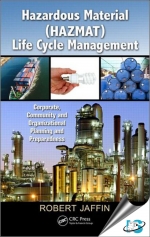Tab Article
It is well known that fluorescent light bulbs and consumer appliances such as televisions, computers, and monitors contain mercury, dangerous chemicals, and other harmful components. The existing literature on hazardous materials addresses the risks attached to specific materials and emphasizes compliance and personal protective equipment (PPE)—but not the Iife cycle management of the materials that represent the hazards. A logistics treatment of the subject is needed to understand the underlying supply chain management principles and apply solutions to reduce overall use of hazardous materials.
Hazardous Material (HAZMAT) Life Cycle Management: Corporate, Community and Organizational Planning and Preparedness is organized into two thematic sections. Section I defines and classifies hazardous materials and covers the U.S. regulatory framework and standards governing the transport and use of such materials. Section II examines institutional and organizational program elements and provides guidelines for developing these programs to reduce liability and risk while lowering point-source pollution and total hazardous waste production.
The logistics approach to hazardous materials yields exponential benefits in costs and the reduction or elimination of such materials. It limits organizational liability and, at the same time, reduces the costs associated with hazardous waste management and disposal. This book serves as an integrative reference offering a better understanding of hazardous materials use, life cycle management, consumption, and waste reduction at a holistic, strategic level.


